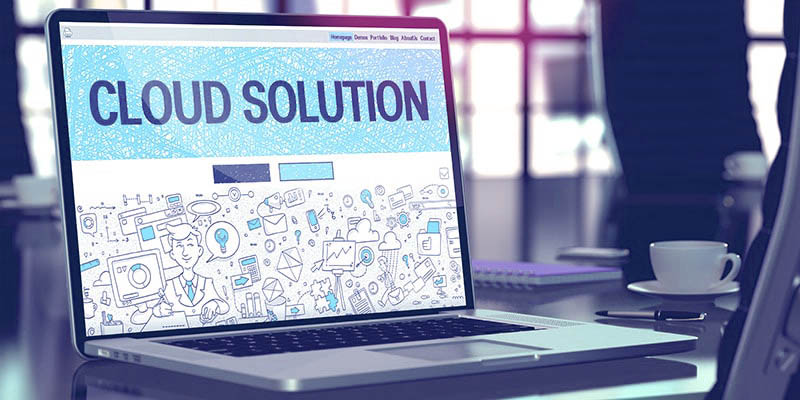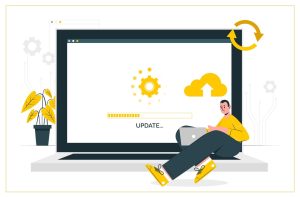Cloud Based Intranet Solutions | Cloud-Based Intranet Security

Cloud solutions are preferred by companies over on-premises software. This is a well-known fact. By 2020, more than 80% enterprise workloads will move to the cloud. What about the intranet? Is it possible for them to also move into the cloud? Yes.
A cloud intranet can be a great option for many companies. Cloud intranets are a cost-effective way for companies to eliminate the complexity and expense of maintaining an on-premises infrastructure. They also allow for lower customization costs and support budgets.
Cloud solutions providers such as Amazon Web Services often claim a 99.99% uptime. Even if your intranet is down, you can be sure it will be back up soon. This is not always true with intranets on premises, especially if there’s a hardware problem that can’t be fixed quickly.
Cloud Based Intranet Solutions
Cloud intranets offer many benefits but security is still a major concern. Nearly 70% of enterprises consider security to be the biggest obstacle on their journey to the cloud. These fears are reinforced by numerous examples.
The infamous iCloud hack, which saw millions of accounts breached by hackers and exposed personal data, is still a recollection. Hackers gained access to the Tesla cloud account and used it for cryptocurrency mining. Telemetry and vehicle servicing data were exposed.
However, cloud security problems are often exaggerated. Cloud security is not always as bad as it seems. Cloud security is largely a function of the human factor. Technology-specific hacks are more rare.
Strengthening the Cloud Intranet Defenses
How can you make your cloud intranet invulnerable? There are many methods to accomplish this, so here are some.
Multi-Factor Authentication (MFA)
It can make a big difference in your security by creating proper authentication procedures for your intranet. Office 365, for example, offers multiple-step verification options to users. Users may need to provide their account credentials in addition to calling, texting, notifying, and sending a verification code to a specific number.
Mobile Device Authentication
Accessing the intranet via smartphones and tablets will be a requirement for your employees. This is another way to create a secure perimeter. The Microsoft Authenticator app, as suggested by SharePoint consultants at Iflexion can be used to request an action from the user such as providing their fingerprint.
Password Policies
A strict password policy is one of the most important security practices that’s often overlooked. Atlassian Access, which allows you to define password policies and expiration rules for collaboration platforms, is one example.
Auditing
You can identify suspicious activity and comply with regulatory requirements such as HIPAA, PCI DSSSS, SOX, etc. by keeping a detailed log of your intranet activity. Companies are required to protect customer data that they deal with by the HIPAA, PCI DSS, SOX regulations. Administrators can track user activity across the intranet using audit log reports in SharePoint Online. These include item views, downloads and shares, as well as changes to intranet content.
Log auditing is an option in all of the well-known intranet software, such as Confluence. Log auditing allows companies to identify bad actors in the company and compromised user accounts. Unusual search requests or irregular download patterns can all be red flags that indicate that the user has taken illegitimate actions, lost control of their account, or is taking illegal or unusually frequent searches.
DLP Policies
Data Loss Prevention (DLP), policies and tools help you to minimize security risks associated with sensitive data management.
SharePoint Online has a robust DLP suite which allows you to control how files are handled under certain circumstances (block file share, encryption of shared documents, etc. You can find out more.
Your DLP policies must be set up strategically. Although it is a tedious process, your security will be greatly enhanced by this. SharePoint Online has automated or semi-automated tools for setting up DLP policies.
Advanced Security Measures
These security measures are essential for cloud intranets and don’t require a lot of effort to implement. However, professional security solutions can be integrated into your intranet if you have a more stringent security policy.
Third-party monitoring tools and security processes are available that provide a greater view of all activities in a corporate intranet. This allows you to make timely decisions based on comprehensive security data. Security Information and Event Management, User Behavior Analytics UBA (UBA) and Identity and Access Management IAM (IAM) are some possible options.
Recruiting Experts
It is vital that your intranet security is maintained. You cannot rely on internal resources alone to create a comprehensive security infrastructure. External partners can be helpful in helping you to scope the security features and protocols that are required to secure your intranet.
Multi-layered Protection is a must
Cloud intranets are becoming increasingly popular because of their many collaboration features and simplified support and management capabilities. These solutions are not immune to security threats, even though they are becoming more popular, especially when we consider the fact that many of them are driven by human factors.
Organizations should assume full responsibility for their cloud-based intranet security. However, you shouldn’t be too concerned about infrastructure you don’t control. You must ensure that your solution meets established security standards.
Multi-layered security measures for intranet security in cloud include content control and user activity tracking. You can extend your security protection to include advanced authentication, biometric access control and mobile solutions.





